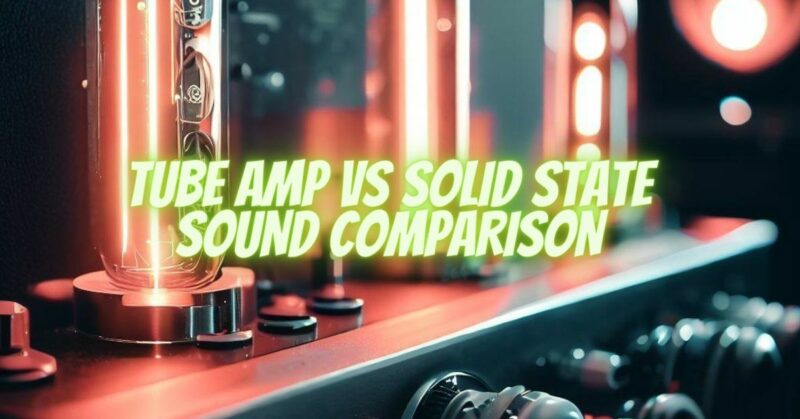Tube amps and solid state amps are two of the most popular types of guitar amplifiers. Each type has its own unique sound and characteristics, and the best choice for you will depend on your individual needs and preferences.
Tube Amps
Tube amps are the traditional type of guitar amplifier. They use vacuum tubes to amplify the signal from your guitar, and this gives them a warm, rich sound that many guitarists love. Tube amps are also known for their responsiveness, which means that they can react quickly to changes in your playing. This can be a great advantage for players who want to be able to express themselves musically with their playing.
However, tube amps also have some drawbacks. They can be expensive, and they can be fragile. If you’re not careful, you can damage the tubes in a tube amp, which can require expensive repairs. Tube amps also tend to be heavier and larger than solid state amps, which can make them more difficult to transport.
Solid State Amps
Solid state amps are a newer type of guitar amplifier. They use transistors to amplify the signal from your guitar, and this gives them a brighter, more modern sound than tube amps. Solid state amps are also more durable than tube amps, and they’re often less expensive.
However, solid state amps don’t have the same responsiveness as tube amps. They can also be difficult to get a good overdrive sound from, which is a popular effect for many guitarists.
Which Type of Amp Is Right for You?
So, which type of amp is right for you? If you’re looking for a warm, rich sound with great responsiveness, a tube amp is a great choice. If you’re on a budget or you need an amp that’s durable and easy to transport, a solid state amp is a good option. Ultimately, the best way to decide is to try out both types of amps and see which one you like better.
Here is a table that summarizes the key differences between tube amps and solid state amps:
| Feature | Tube Amps | Solid State Amps |
|---|---|---|
| Sound | Warm, rich | Bright, modern |
| Responsiveness | Excellent | Good |
| Durability | Fragile | Durable |
| Price | Expensive | Inexpensive |
| Weight | Heavy | Light |
| Transportability | Difficult | Easy |
I hope this article has been helpful. If you have any further questions, please feel free to comment.


